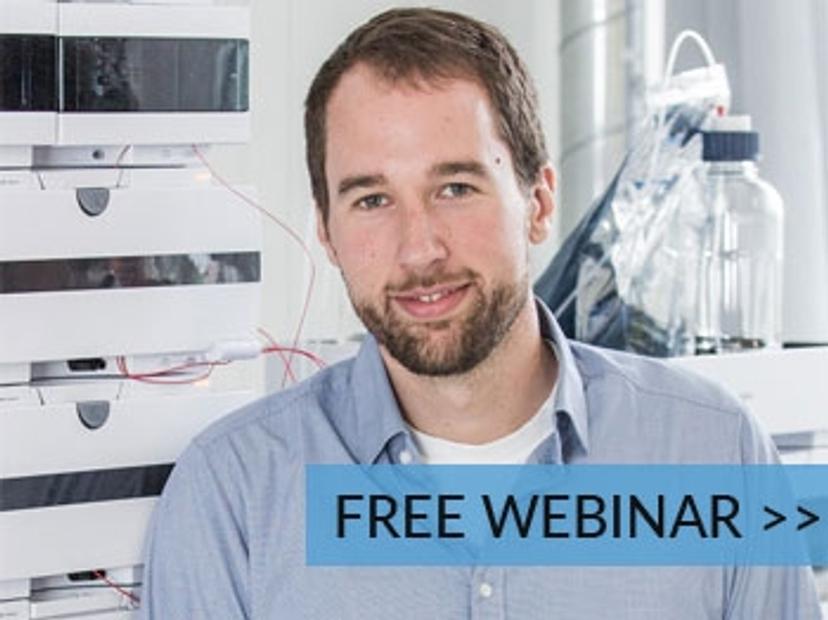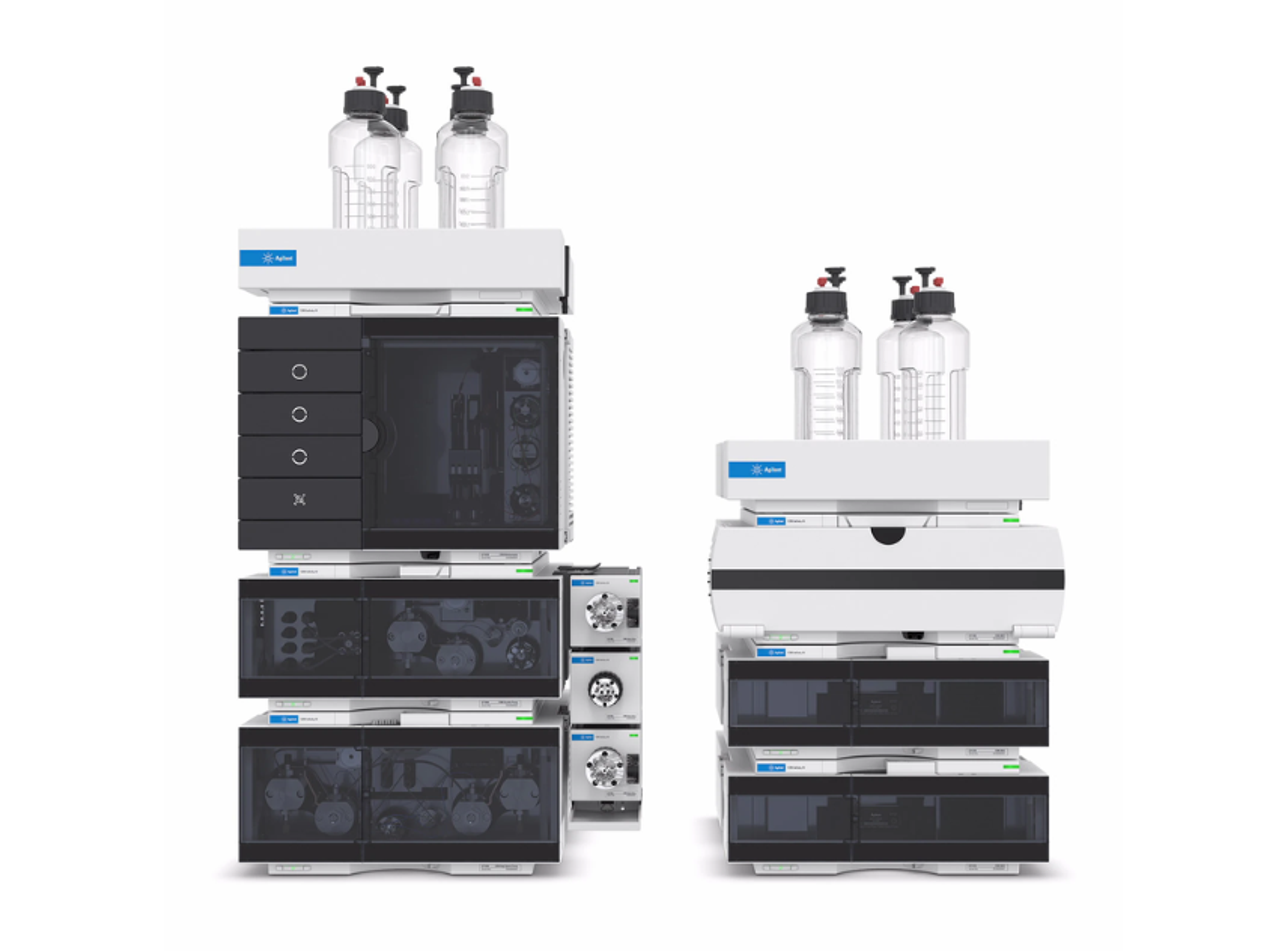Everything you ever wanted to know about HPLC columns – part 3
The third in our 3-part series of articles answering your questions on column lifetime and performance focuses on solvents and buffers
28 Jun 2020

Following our popular webinar with HPLC columns expert Andreas Borowiak from Agilent Technologies on maximizing lifetime and performance from your LC columns, you had a lot of great questions. We’ve compiled them into a 3-part series of themed articles, along with Borowiak’s responses. Part 3 is below, with a focus on buffers and solvents.
Think you could benefit from this free masterclass, but missed it? It is now available to watch on demand.
Q: Which solvent filter would you recommend for buffer and sample filtration?
AB: We have a variety of filter materials available for different use cases of the Agilent InfinityLab Filtration Assembly. To filter organic solvents, we recommend a PTFE material – other materials have limited stability in organic solvents. For HPLC buffers, we recommend regenerated cellulose as long as you do not use very strong acids or bases – in this case, we recommend Nylon filters. All materials can be purchased from Agilent. However, there are exceptions to this and so I would recommend referring to our filtration whitepaper: publication number 5994-1504EN. To filter samples, we recommend the Agilent Captiva Syringe filter portfolio. I would recommend reaching out to your Agilent sales rep in case of further questions.
Q: What porosity must the solvent filter be? If they don't have one, can we sonicate?
AB: Sonication would help to fully dissolve salts and is a good practice for buffers, but it should not be a substitute for filtration or inline filters. No chemical that we buy is 100% pure. You will always have particles and other, possibly non-soluble chemicals inside that will not be dissolved in your mobile phase; you could also have dust coming in from the air in the lab if bottles are not properly sealed. Sonication will not help to dissolve those. They will stay in the mobile phase and will still get sucked into your instrument.
What I would recommend is to use the standard glass filters that you have in your solvent bottles – they are shipped with the Agilent instruments and you can purchase them from Agilent. In addition, I recommend an inline filter with a porosity that matches the instrument you have. For example, if you have an ultra-low dispersion UHPLC instrument with a 1.9 µm column, I would go with the smallest available inline filter in the pump, which is 0.3 microns.
This will help filter everything that comes in from the solvent bottles, but also seal wear from the pump seals. Especially when operating under high pressures, the seals are under high mechanical stress. They are made from polymers, so this will abrade small particles from the seals. Your inline filters will catch those. If you have a traditional HPLC instrument, e.g. an 1100 series or a 1220 Infinity II, and you do HPLC work with low pressures and large particle columns, you can use bigger porosity inline filters. I would still recommend the use of inline filters because you can increase the robustness of your instrument, and you can increase the lifetime of your column.
Q: What is the maximum concentration (mM) of aqueous buffer that you would recommend for high-pH HPLC applications? For example, using ammonium bicarbonate or triethylammonium bicarbonate.
AB: I would like to refer to the paper from Kirkland again that nicely summarizes the effects of buffer salts on column lifetime. It shows that there is no maximum allowable concentration of buffer because there are several variables that can influence column lifetime. As you correctly mentioned, buffer concentration is one of those. Others are temperature and the ionic strength of the buffer salt used. For ammonium bicarbonate, we have a few experiments that show good lifetime at 10 mM.
Q: Referring to slide 10, do you also observe these contaminations in acetonitrile?
AB: While pure acetonitrile will not show significant microbial growth, you will still see contaminations coming in from air, e.g. dust if bottles are not properly sealed, or leachables from tubing. To avoid any external contamination from air and stop the evaporation of solvents, we recommend the use of Agilent Stay Safe Caps.
Q: Could you please re-explain low pH failure?
AB: It is always recommended that columns should not be used near their pH limits. Most end-capped columns work between pH 2-9. It is suggested that you work between pH 2.7-8 to prevent damage to the column. Too low of a pH can cause stripping of the end-cap groups as well as the stationary phase backbone, resulting in a loss in retention and bad peak shape.
Q: Are the inline filters universal? Can they be used for any mobile phase composition?
AB: Yes, they are universal, they can be used with any mobile phase composition. As they are physical filters, please consider the micron size of the filter based on column particle size.
Q: Is it OK to flush your column in water/organic, running it low flow overnight?
AB: If the column is a standard LC column, the column can be flushed in water/organic using a low flow overnight. When the aqueous buffer has been used for the application, flush out the buffer first with 100% water before flushing with water/organic.
Q: If I forget to put in the end-plugs before storing the column. What should I do before using it?
AB: The column should be rinsed thoroughly, preferably overnight, with the mobile phase of the application to make sure the packing bed is totally wetted. If column performance does not recover, most probably the column bed got disrupted. In this case, discard the column.
Q: Some HPLC solvent manufacturers say it's OK not to filter their solvent because it’s already LC grade. Should we follow that or is it best to still filter them?
AB: No, HPLC grade solvents have been filtered by the supplier and can be used immediately. We recommend filtering milli-Q water and self-made buffer solutions, especially for use with columns packed with sub-2micron particles.
Want to read more? Part 1 of this series focus on HPLC column storage and cleaning and can be found here, part 2 focuses on peaks and selection of columns and conditions, which can be found here.

